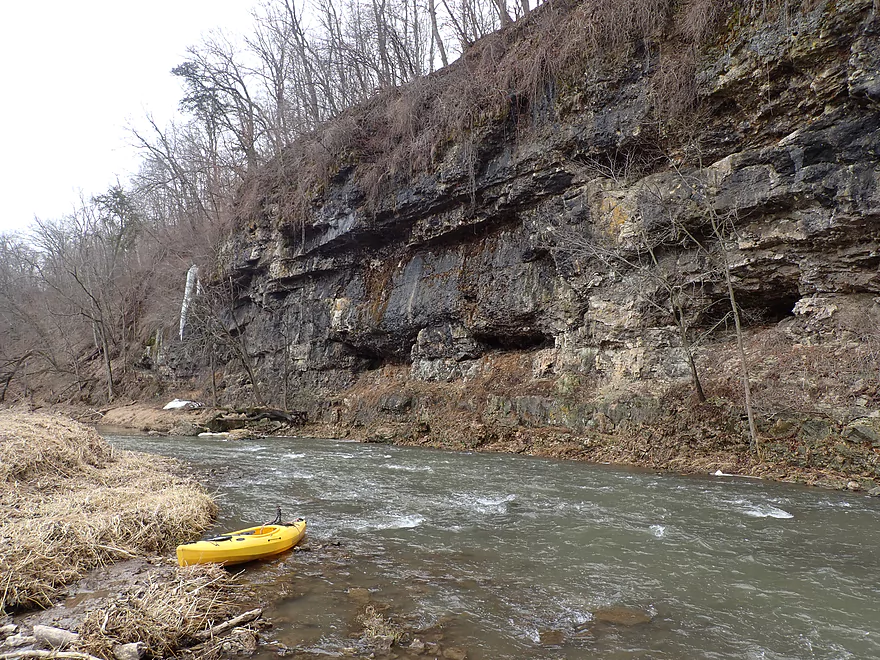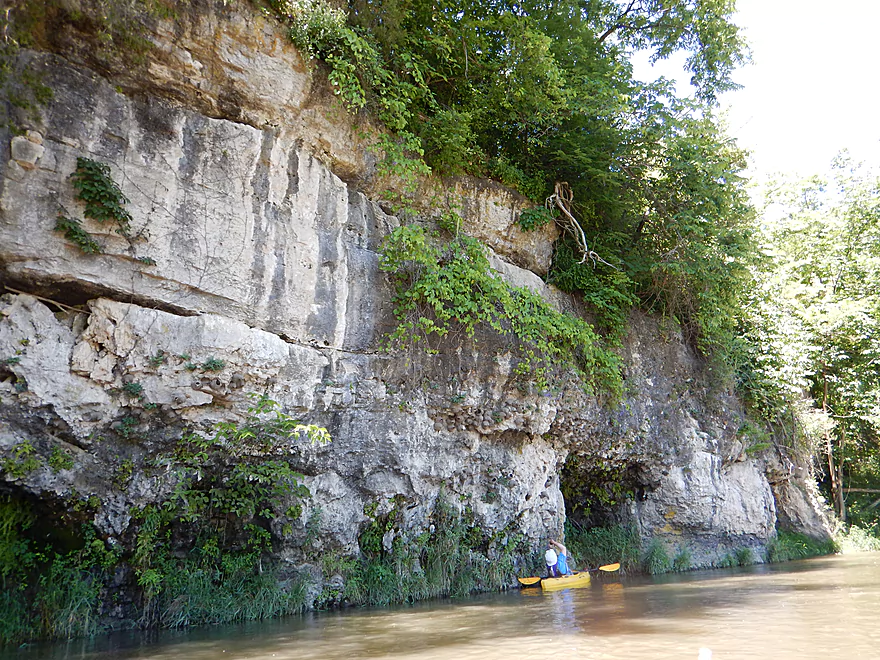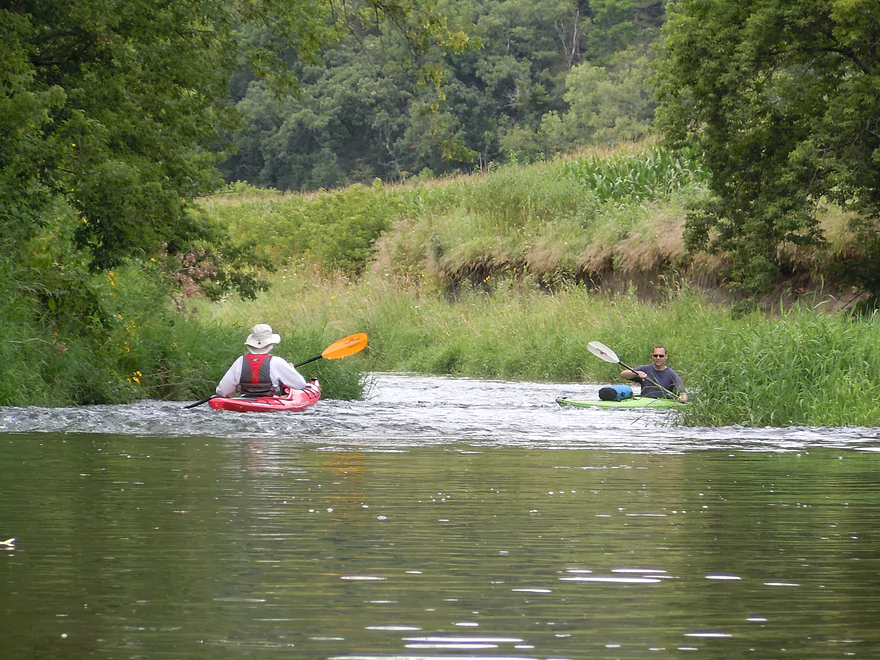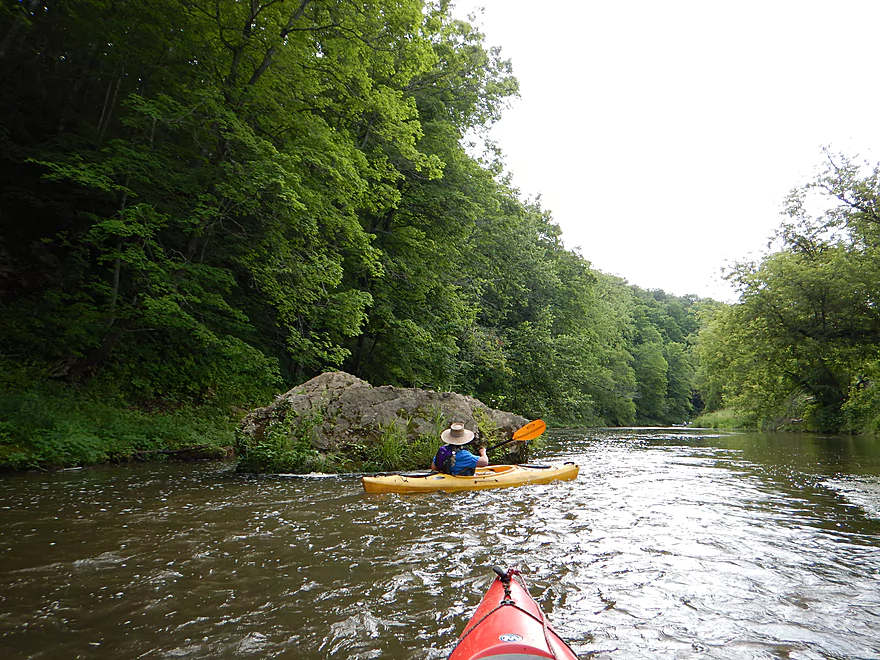Platte River
While not as scenic as neighboring Grant River, this is still one of the elite paddling rivers in Southern Wisconsin. Highlights includes limestone boulders, fun rapids, and scenic outcrops.
Trip Reports
Coon Hollow Road to Hwy A

Date Paddled: April 2nd, 2023
Distance: 3.8 miles
Time: Expect 2 hours
This Upper Platte River leg isn't perfect. It does need high water levels to be runnable and the shoreline erosion is unsightly. But, the rapids and limestone cliffs are fantastic.
Read More...Hwy A to Airport Road

Date Paddled: July 9th, 2016
Distance: 6.3 Miles
Time: 4 hours 32 minutes (3 hours is more typical)
An upstream section of the Platte with fantastic limestone outcrops and fun riffles. This section however is negatively impacted by grazing and does run dry in late summer though.
Read More...Airport Road Bridge to Platte Road bridge

Date Paddled: August 4th, 2013
Distance: 5 Miles
Time: 3.5 Hours
Located in the SW corner of the state, the Platte is a very nice river often overlooked by paddlers. Unlike its more popular neighbor, the Grant, it has little in the way of rock outcroppings (although it has a few). It also suffers somewhat from poor agricultural use and barbed wires running across the river. […]
Read More...Platte Road to Big Platte Road

Date Paddled: June 14th, 2015
Distance: 5.1 Miles
Time: 4 hours (2.5 hours would be more typical)
A fine southwestern Wisconsin paddle with many fun but safe rapids. This is mostly a rural farm paddle, but is still scenic with great views of the driftless hills.
Read More...Overview Map
Detailed Overview
- Upstream of Rock Church Road: The river here is likely too small and degraded by pasture to be enjoyable for paddling. I don't know for sure though.
- Rock Church Road to Hopewell Road: (3.0 miles) Very small...likely needs high water. Maybe 4-6 logjams. Likely mostly a pasture paddle, but a few really nice outcrops and maybe an intriguing gorge.
- Hopewell Road to Annaton Road: (4.2 miles) Small creek. Mostly open with a mixture of wetlands and pasture. Maybe 1-2 outcrops and 4-6 logjams. Maybe some fences.
- Annaton Road to Hwy E: (0.9 miles) Maybe 1 jam. Mostly an open paddle.
- Hwy E to Sleepy Hollow Road Bridge 1: (1.8 miles) River grows from creek to small river with addition of two major tributaries. Might be a few down trees.
- Sleepy Hollow Road Bridge 1 to Sleepy Hollow Road Bridge 2: (1.6 miles) A good prospect that is mostly open. Probably a few limestone outcrops. The second Sleep Hollow Road bridge is not a viable access because of a fence.
- Sleepy Hollow Road Bridge 2 to Coon Hollow Road: (1.8 miles) A good prospect a few nice limestone outcrops.
- Coon Hollow Road to Hwy A: (3.9 miles) A good leg with many scenic outcrops (including one massive one) and multiple fun rapids. Unfortunately this stretch can only be run at high water levels and suffers from serious shoreline degradation. Hwy A is a horrible access.
- Hwy A to Airport Road: (6.4 miles) An excellent leg with great limestone outcrops.
- Hwy A to Kingsford Road: (3.3 miles) A good leg with 6 mediocre outcrops and one really nice one.
- Kingsford Road to Airport Road: (3.2 miles) An excellent leg with multiple outcrops and perhaps the best outcrop on the entire Platte River.
- Airport Road to Platte Road: (5.0 miles) An excellent leg with fun riffly current.
- Platte Road to Big Platte Road Bridge #1: (5.1 miles) An ok leg with fun riffles, limestone outcrops and nice valley vistas.
- Big Platte Road Bridge #1 to Big Platte Road Bridge #2: (3.2 miles) An ok prospect.
- Big Platte Road Bridge #2 to Hwy O: (1.3 miles) An ok prospect.
- Hwy O to Indian Creek Road: (7.6 miles) A mediocre prospect.
- Indian Creek Road to Mouth at Mississippi: (1.6 miles) A mediocre prospect.
- Mississippi Options: Tricky. The Grant River Recreational Area is 3.4 miles upstream of the mouth (that can be tough sledding especially in high water). Downstream you could take out at Eagle Point Lane (very scenic), but that is 5.5 miles on a big Mississippi.
-
Replica air king watches offer an affordable alternative to the iconic luxury timepiece. With meticulous craftsmanship and attention to detail, these replicas mimic the original’s design and functionality, providing a stylish option for watch enthusiasts who appreciate the timeless aesthetic without the hefty price tag.
